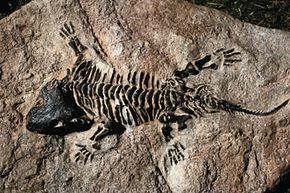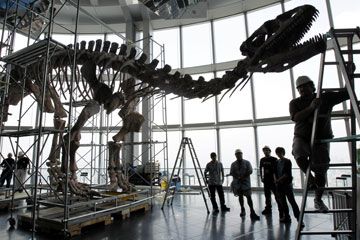Systematic biologists cultivate a unique orchard. Following in the footsteps of Charles Darwin, they grow phylogenetic trees -- branching diagrams that depict lines of evolutionary descent back to a common ancestor. Also known as phylogenies, these assemblies of lines and classifications chart biodiversity with varying specificity, from individual organisms to broader taxonomic rankings such as kingdoms and domains.
With each tree, these biologists come closer to uncovering something even greater: a four-dimensional model of life itself. The fossil record plays an instrumental part in reconstructing this tree of life, but how does it work? And how close are modern humans to completing the record?
Advertisement

